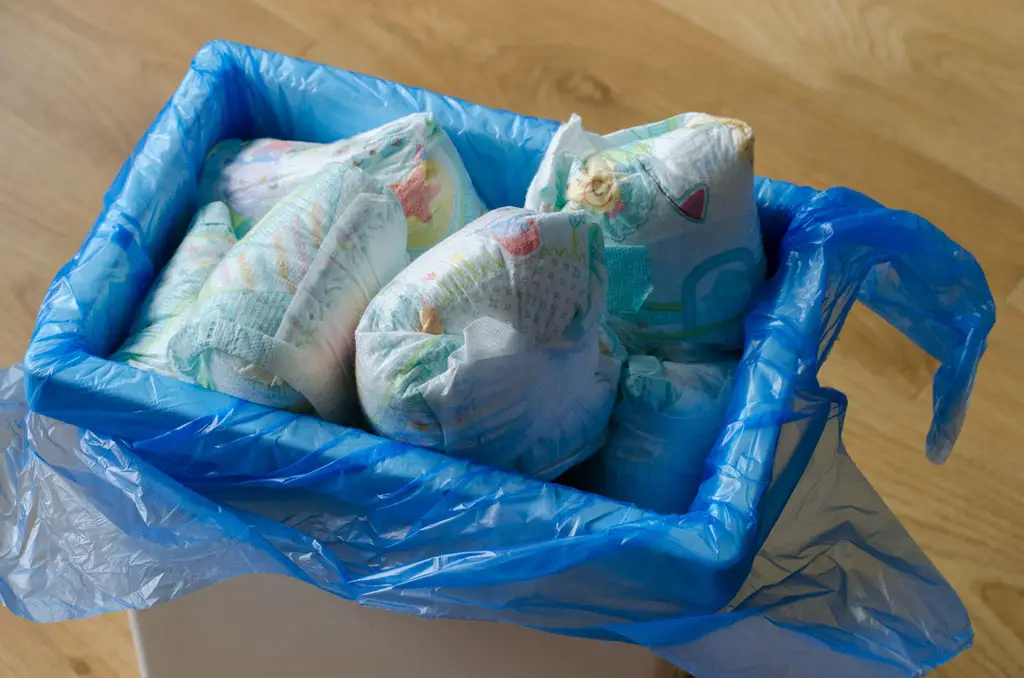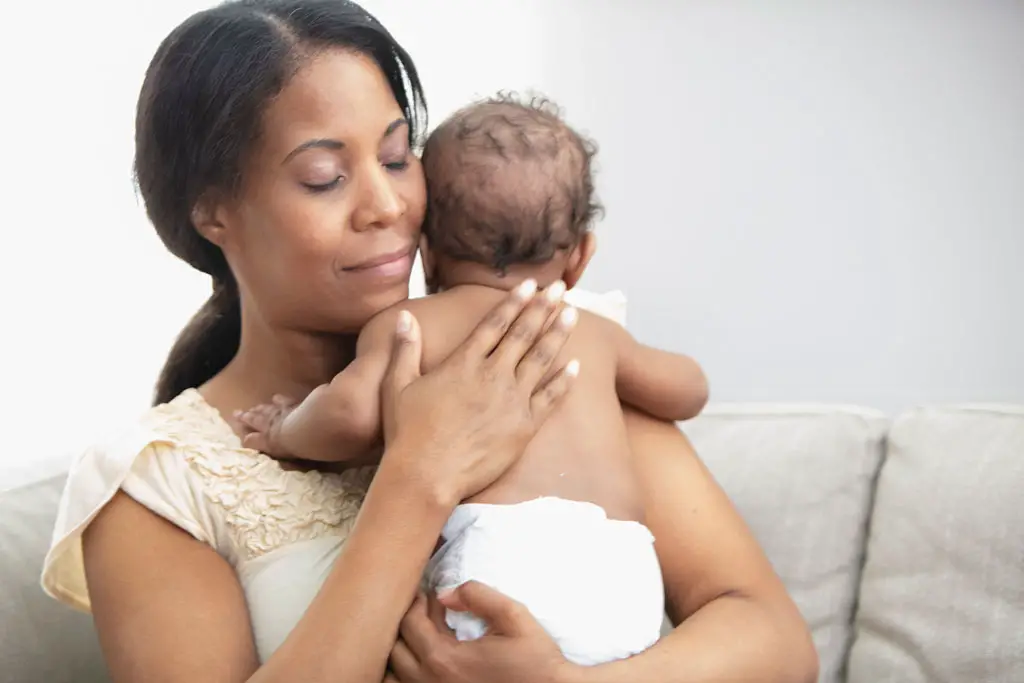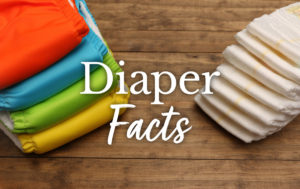Are cloth diapers superior or do the advantages of disposables outweigh the costs?
Cloth diaper use has been rising over the past several years as environmental consciousness, health, and increased understanding of the advantages of having come into focus for many new parents.
Modern cloth diapers are different than what grandma used.
They are more comfortable, more convenient, and easier to use than ever before, but that does mean that they are as easy and convenient as disposables.
Cloth diapers don’t contain the chemicals used in disposable diaper production and, very importantly, they don’t hundreds of years to decompose in landfills.
But disposable diapers are more convenient at only a marginally higher cost.
So which is the best option for you and your family?
Diapers And The Environment:

Estimates put the number of disposable diapers used each year in the United States between 28-34 billion.1,2 92% of those diapers end up in landfills.
Disposable Diapers:
How long do diapers take to decompose?
Disposable diapers take up to 500 years to decompose and are the 3rd largest consumer item in landfills today.
For families that use them, disposable diapers constitute about 50% of household waste.
While health and safety guidelines require disposing of fecal waste in the sewage system, not the trash, researchers have found that over 99% of disposable diaper users trash their baby’s waste along with their diapers leading to serious health issues including groundwater contamination and threats to sanitation workers’ health and safety.
Furthermore, the production of disposable diapers uses huge quantities of wood pulp, plastics (petroleum), and water, as well as environmentally dubious chemicals such as chlorine.
Cloth Diapers:
None of that is to say that cloth diapers don’t come with their environmental costs.
Significant amounts of water and electricity are necessary to keep cloth diapers fresh and safe for babies.
Cloth diaper proponents recommend three separate wash cycles for each load of cloth diapers. If your machine dries them as well, the cost and waste of doing 2-3 loads of diapers per week for 2+ years are substantial.
Many parents are now opting for disposable cloth diaper liners.
While these liners are flushable, many are likely to end up in landfills as well and have many of the same production resource requirements as disposables.
The Bottom Line:
Cloth diapers have a clear advantage for environmentally conscious parents.
Comfort, Dryness, And Diaper Rash:

A baby’s comfort is an important element when considering whether to choose cloth or disposable.
No matter what kind of diaper your child wears, newborn babies should be changed every hour and older babies should be changed every 3-4 hours.
Cloth diapers offer a range of options, styles, and fabrics therefore comfort can vary, but you have the flexibility to experiment with different configurations such as pocketed, disposable liners, and different fasteners.
Disposable diapers are similar in design, materials, and fit across brands. Properly sizing your disposable diaper for the size of your baby is the main variable to consider.
A properly fitted disposable contains materials that pull moisture away from your baby’s skin which, if changed properly, will keep them dry and comfortable.
Due to the wide variety of cloth diaper designs and materials, dryness can vary and requires some experimentations.
Some parents express frustration about leakage at the gussets (leg holes) on some types of cloth diapers. Babies come in a variety of shapes and sizes so there is no one-size-fits-all option.
About half of all babies will experience diaper rash at some point on the road to potty training regardless of whether they wear disposable or cloth diapers.
The reasons for diaper rash can vary from allergies to diet to hygiene, to a range of environmental factors as well as diaper fit, materials, and time between changings.
Yeast infections, transitioning from breastmilk to solids, and chaffing are all leading causes of diaper rash.
The Bottom Line:
The choice of cloth or disposable diapers has no real effect on the likelihood of diaper rash.
Costs: Money, Time, And Effort:

A 2016 survey6 found that the most likely cloth diaper user is between 25-35, a stay-at-home mom, and has an annual household income between $50-$70k/year.
In other words, they are young enough to be idealistic, have more time than a working mom, and likely have some disposable income.
This is important because of the time require to commit to cloth diapers, the upfront cost, and appreciation of the environmental impact of cloth diaper users are all central considerations for those moms that wish to try cloth diapers.
In other words, disposable diapers are a convenience, but cloth diapers are a lifestyle.
While cloth diapers appear to be cheaper, there is more to consider than just a side-by-side cost comparison of the diapers themselves.
Cloth diapers require an upfront investment in not only a supply of 20-30 cloth diapers, but also things like a diaper pail, pail liners, a sprayer or scraper to remove feces, special detergent, and possibly inserts or liners.
Additionally, the need to launder cloth diapers 2-3 times and dry them or use a diaper laundering service, considerably increase the cost associated with cloth diaper use.
Despite cost being the number one reason, parents choose cloth diapers, a 2018 survey7 found that the cost difference was minimal…around $200 in savings for the first two years of a baby’s life.
However, if cloth diapers are reused on multiple children in a family, this can create extra savings.
If cloth diapers aren’t much cheaper, then what other cost advantages do they offer?
Cost isn’t measured just in dollars but in time and effort. As any working parent knows, these are often bigger considerations than price and here disposables have an advantage.
Cloth diapers are a big commitment of time and energy so it’s best to be clear-eyed about why you are doing it. It is a lifestyle based on sustainable living and responsible environmental stewardship.
There is also a large and engaged community that has developed around the cloth diaper lifestyle which many parents, particularly stay-at-home moms, find valuable and comforting.
The cloth diaper lifestyle is time-consuming. In addition to those 2-3 loads with multiple wash cycles each week, you also have so many choices and options in cloth diapers that a great deal of time can be spent researching and learning.
Failed experiments and discarded types of cloth diapers and accessories can also add to the overall cost.
If you opt for the hybrid model of cloth diapers with disposable liners, this can also get expensive.
If, on the other hand, you value time and convenience over these lifestyle considerations, disposable diapers may be your better option.
The Bottom Line:
While cloth diapers may be marginally cheaper throughout your baby’s development, the cost difference is low and should be measured against the considerable time and effort that the cloth diaper lifestyle requires.
For parents that favor convenience and ease of use, disposable diapers offer a stronger value proposition.
If you are looking to balance your values, lifestyle, and convenience, some hybrid options might work best for you.
That could include using a cloth with disposable liners or even using cloth at home but keeping those disposables in the diaper bag for road trips and visits with grandma.
Diapers And Your Baby’s Health:

Another reason that many parents choose cloth over disposable is the threat of chemical contamination, even at very low levels, that could harm the child immediately or later in life.
Disposable diapers may contain materials such as chlorine, dyes, fragrances, and phthalates.
While the quantities of these are low, the risk cannot be completely discounted. Adding to the confusion, many manufacturers only publicize the ingredients which are required by federal law.
Fragrances, for example, are considered proprietary trade secrets and their ingredients don’t need to be disclosed.
Some manufacturers are transparent about the chemicals they use, others are not. A cottage industry of chemical-free and green disposables has sprung up around this issue.
These are alternatives worth exploring for parents who are concerned about what will be touching their babies over a 2-3 year period.
The other concern that is often raised revolves around SAP or super absorbent polymer, the little crystals in disposable diapers that grab moisture and pull it away from your baby’s skin.
SAP has only been in use since the 1980s and many skeptics raise concerns about a lack of research into their safety. They are made of petroleum and may contain chemicals of concern.
Concerns have also been raised about SAP as a contributing factor in Toxic Shock Syndrome, although it’s important to note that no causal connection has ever been established.
While chemicals are used in the production of disposable diapers, most are long gone by the time they reach the grocery shelf.
No study or survey has ever found a link between chemicals specifically used in diapers and adverse health effects.
While many parents find that comforting, others remain skeptical that what hasn’t been proven equals safe.
Both are legitimate perspectives and come down to the individual.
Frequently Asked Questions:
Conclusion!
We don’t know what we don’t know, but to date, research has not found a significant risk to babies’ health due to the chemicals found in disposable diapers, but that doesn’t necessarily mean they are entirely safe either.
Here cloth diapers have an advantage, in perception if not necessarily the outcome.
While there may be some chemicals used in the production of cloth diapers, it is generally less than disposables.
Additionally, cloth diapering allows greater control over what chemicals and products to which your baby is exposed.
The low risk of chemical exposure may be one worth taking for some parents, but not for others.

As a mother of four very energetic children, Emilia knows how chaotic motherhood can be. She’s learned a lot of lessons along the journey so far and loves sharing the tips & tricks she’s picked up over the years with anybody else on the same life path.

